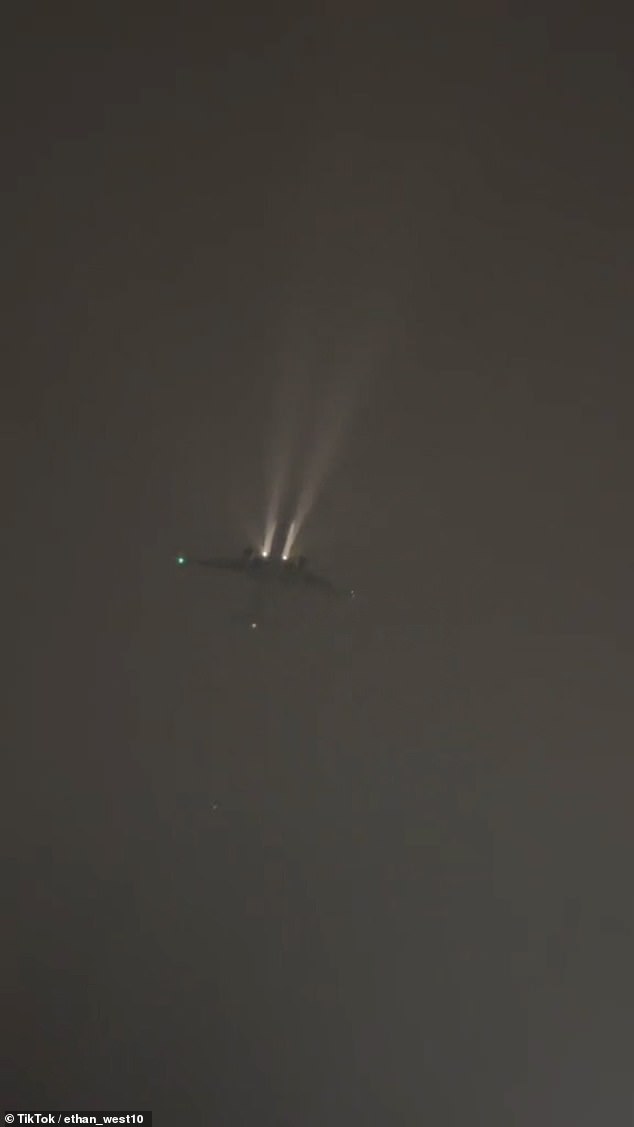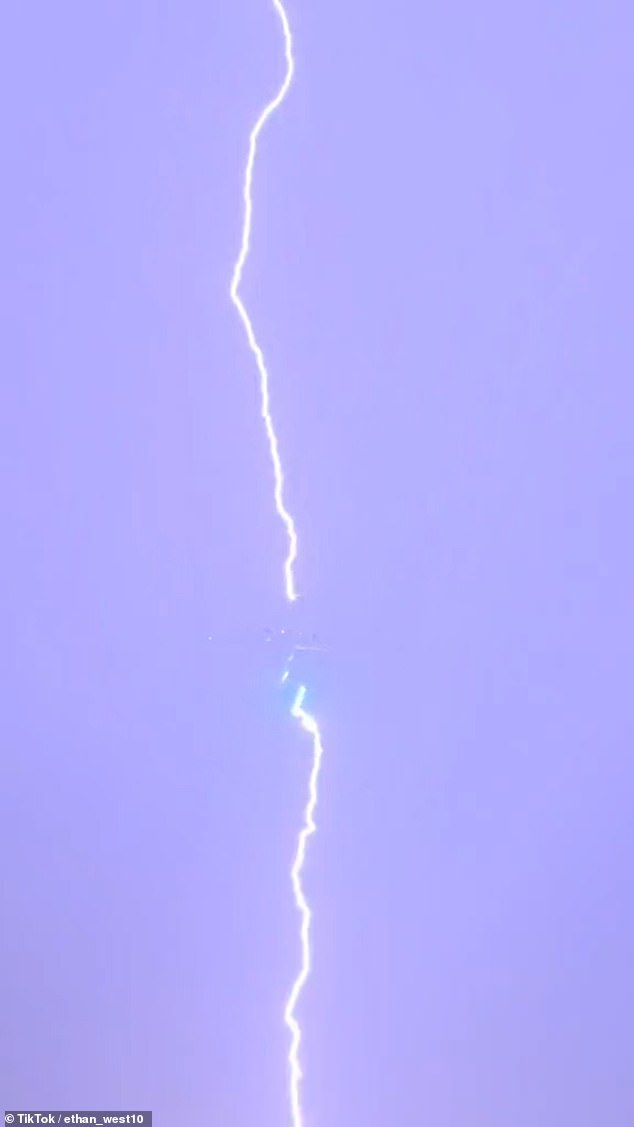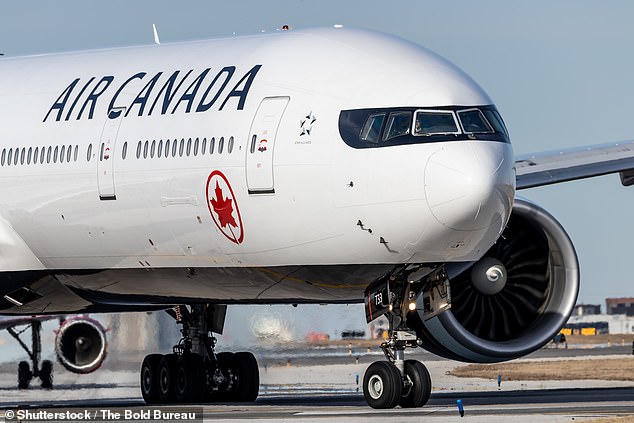Terrifying moment massive lightning bolt strikes London-bound Boeing 777 carrying 400 passengers moments after take off in Canada
- The incident, which was captured on video by a plane spotter, resulted in no casualties and the plane was able to continue its flight to Heathrow.
This is the shocking moment a plane flying from Vancouver to London with 400 people on board was struck by lightning on Sunday.
The Air Canada Boeing 777 was struck by the massive lightning bolt shortly after takeoff from Vancouver Airport, Canada.
The incident, which was captured on video by a plane spotter, resulted in no casualties and the plane was able to continue its flight and land at London Heathrow as planned.
The plane had taken off only moments earlier, but was already high in the sky.
The breathtaking video was shot by aviation enthusiast Ethan West, who is studying to become a pilot.
The lightning bolt hit the plane squarely and continued its path towards the ground.
The lightning bolt hit the plane squarely and continued down the other side toward the ground
The bolt did not disrupt the aircraft’s flight.
Despite it being a terrifying place for those on the ground, the passengers themselves would almost certainly have felt nothing.
According to Executive Flyers, modern aircraft are built with a carbon composite covered with a thin copper layer to conduct electricity around the aircraft and not let it in.
Passengers might see a flash of lightning or the sound of thunder if lightning strikes their plane, but would not be in danger or feel as if they had been struck.
Air Canada said the plane was inspected upon arrival at London Heathrow Airport to ensure no damage affected the safety of the flight.
According to the National Weather Service, each aircraft is struck by lightning on average once or twice a year.
This may seem like a huge amount, given the apparently low probability of two entities moving at such great speeds being at the exact same point at the exact same time.
Commercial passenger aircraft fly at a speed of approximately 800 km/h. Lightning travels at a speed of almost 750 million miles per hour.
However, it is thought that the very fact that the plane is in the air attracts the lightning as the lightning bolt tries to find its fastest route to a solid.
Most lightning strikes occur at freezing temperatures at high altitudes or during turbulence, and vary by location.

The plane continued its route to London Heathrow, unaffected by the lightning bolt

The lightning was so bright that the plane could barely be seen in the center of the lightning bolt

Air Canada said the plane was inspected upon arrival at London Heathrow Airport to ensure there was no damage affecting the safety of the flight (Stock Image)
More than half of aircraft lightning strikes occur between March and July, with lightning strikes most common when the aircraft is flying through clouds during ascent or descent.
Lightning is almost 30,000*c – three times hotter than the surface of the sun.
Despite being rare, there have been nine recorded plane crashes attributed to lightning.
Seven of these crashed aircraft were commercial aircraft, and the other two were military aircraft.
In most of these crashes, the aircraft was flying at low altitude while ascending or descending.
The worst of these crashes was 1971 LANSA Flight 508, which killed 91 of the 92 people on board.
